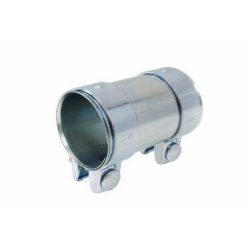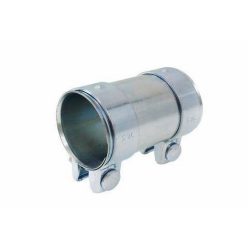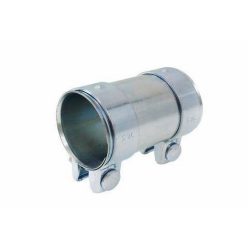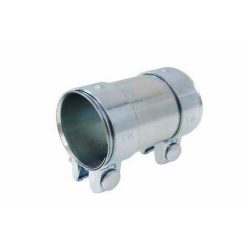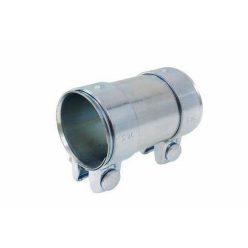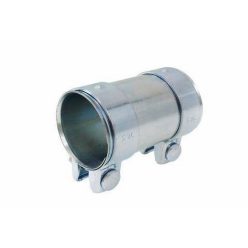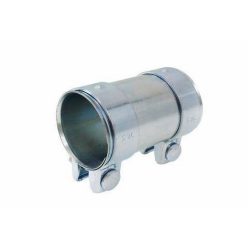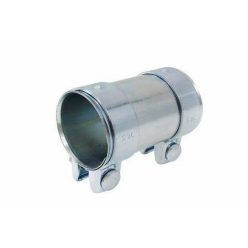Our exhaust pipe connectors with clamps offer a clean, weld-free way to join sections during fabrication or repair. These universal slip joint sleeves use robust band clamps to ensure a tight seal and easy service. Most options are made from stainless steel to resist heat and corrosion. Choose by the correct pipe diameter and length to achieve a durable, leak-free connection in your exhaust system.
Net price: 9 €
Net price: 17 €
Net price: 8 €
Net price: 17 €
Net price: 17 €
Net price: 16 €
Net price: 14 €
Net price: 10 €
Net price: 21 €
Net price: 17 €
Net price: 16 €
Brief Summary & Key Benefits
Exhaust pipe connectors with clamps provide a quick, weld-free way to join sections, ideal for upgrades, repairs and track-side service. The clamped sleeve design ensures serviceability, reliable sealing and neat transitions between pipes. With stainless steel construction the parts withstand heat and corrosion, while proper diameter and length selection delivers a quiet, leak-free joint.
Key benefits include reduced installation time, easy disassembly, consistent clamping force and lower risk of exhaust leaks. The wide band clamp distributes load evenly to prevent localised deformation, maintaining seal integrity under heat cycles and vibration.
Technical Basics
These connectors are short slip sleeves that overlap both pipe ends; a band clamp provides axial compression to seal the joint. Commonly made from stainless steel (e.g., 304 grade), they offer good resistance to heat and corrosion. Nominal sizing is shown as pipe diameter (mm) plus sleeve length (mm). The wide clamping surface improves sealing and reduces marking compared to narrow U-bolts.
Compatibility depends on the external diameter of your exhaust tubing (OD). A precise match minimises leakage and resonance. Typical mistakes include choosing an oversized connector or neglecting deburring the pipe ends, both of which can compromise sealing. Coatings are generally unnecessary on stainless components; avoid sealants unless a manufacturer explicitly recommends them.
Selection Criteria
Start by measuring the pipe’s outer diameter accurately. The connector should match the OD with minimal tolerance for a secure fit. Next, pick the sleeve length: longer sleeves provide more engagement and sealing margin but require more packaging space. For durability and appearance, stainless steel is the default choice for both road and motorsport use. In racing, the ability to remove and refit parts quickly is a major advantage over welded joints.
For flow and noise control, square-cut ends and smooth internal steps are recommended. Where thermal expansion is significant, combine the connector with a flexible section to reduce stress on welds and hangers. Consider proximity to heat-sensitive components, heat shields and the floor pan when planning placement.
Installation & Maintenance
Before assembly, clean and deburr pipe ends and mark insertion depth. Fully seat the sleeve and tighten the clamp gradually and evenly (cross pattern for twin-bolt types). Always torque to the specified tightening value; overtightening can deform the clamp or tubing. After the first heat cycle, re-torque the fasteners to account for settling and thermal expansion.
During maintenance inspect clamp condition, fastener corrosion and pipe end geometry. Soot traces or hissing indicate a potential leak—check alignment and torque. Replacement is straightforward: loosen, separate the joint and fit a fresh sleeve if needed.
FAQ
Q: What are clamped exhaust connectors for?
A: They join two pipe sections without welding, enabling fast service and configuration changes.
Q: Which material should I pick?
A: Stainless steel offers the best heat and corrosion resistance for road and track use.
Q: How do I choose the size?
A: Match the connector to the pipe’s external diameter; verify with callipers for an accurate fit.
Q: Do I need sealant?
A: Usually no; a correctly tightened band clamp provides an effective seal.
Q: Should I re-check torque?
A: Yes—after the first heat cycle, re-torque to ensure long-term sealing.

